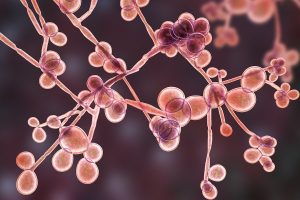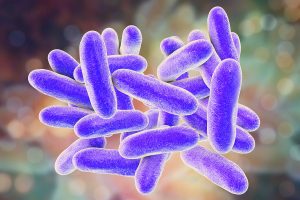 When it comes to sample testing, our lab can test for specific substances like asbestos or lead, but to test for the presence of living organisms, we can opt to use microbiology identification. In the microbiology identification process, scientists examine samples in a variety of ways and run a series of tests to draw conclusions about the presence of microorganisms in the sample. In homes and businesses, this can be particularly helpful in testing air samples for the presence of mold and microorganisms.
When it comes to sample testing, our lab can test for specific substances like asbestos or lead, but to test for the presence of living organisms, we can opt to use microbiology identification. In the microbiology identification process, scientists examine samples in a variety of ways and run a series of tests to draw conclusions about the presence of microorganisms in the sample. In homes and businesses, this can be particularly helpful in testing air samples for the presence of mold and microorganisms.
It might surprise you to learn that microbiology identification is utilized in a number of different fields beyond the testing of air in your home or business. In the medical field, microbiology testing is used to identify the presence of viruses, parasites, fungi, and bacteria that cause harm to the human body. Pharmaceutical microbiologists study enzymes, vitamins, antibiotics, and vaccines. Food microbiology surrounds the identification of bacteria and microbes that are present in spoiling foods and the foodborne illnesses they cause. When studying the environment and the atmosphere, in particular, microbiology identification is utilized to understand how microorganisms in the environment affect human health.


![]()




 When it comes to sample testing, our lab can test for specific substances like asbestos or lead, but to test for the presence of living organisms, we can opt to use microbiology identification. In the microbiology identification process, scientists examine samples in a variety of ways and run a series of tests to draw conclusions about the presence of microorganisms in the sample. In homes and businesses, this can be particularly helpful in testing air samples for the presence of mold and microorganisms.
When it comes to sample testing, our lab can test for specific substances like asbestos or lead, but to test for the presence of living organisms, we can opt to use microbiology identification. In the microbiology identification process, scientists examine samples in a variety of ways and run a series of tests to draw conclusions about the presence of microorganisms in the sample. In homes and businesses, this can be particularly helpful in testing air samples for the presence of mold and microorganisms. In the fall of 2017, an outbreak of harmful bacteria linked to the cooling mist at Disneyland in California caused 22 people to develop Legionnaires’ disease, resulting in one fatality. In
In the fall of 2017, an outbreak of harmful bacteria linked to the cooling mist at Disneyland in California caused 22 people to develop Legionnaires’ disease, resulting in one fatality. In  When we think of combustion engines and the pollutants they produce, we typically picture cars and trucks driving along the interstate. In fact, we rarely think that there would be contamination from these combustion processes inside of our homes and businesses. If you’ve ever noticed a black stain on your carpet, around your wall outlets, or near ventilation grates, you may have a carbon black or soot problem on your hands. Carbon black and soot can both pose a significant risk to the health of you and your family if left undetected and untreated.
When we think of combustion engines and the pollutants they produce, we typically picture cars and trucks driving along the interstate. In fact, we rarely think that there would be contamination from these combustion processes inside of our homes and businesses. If you’ve ever noticed a black stain on your carpet, around your wall outlets, or near ventilation grates, you may have a carbon black or soot problem on your hands. Carbon black and soot can both pose a significant risk to the health of you and your family if left undetected and untreated.







